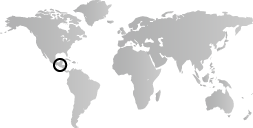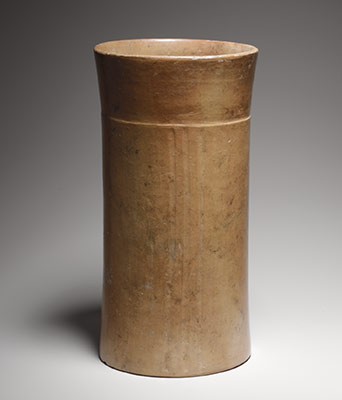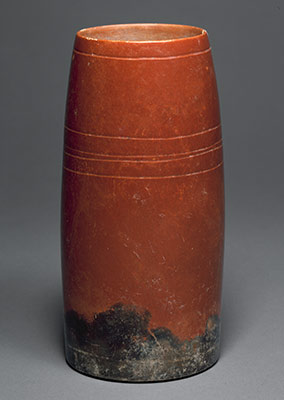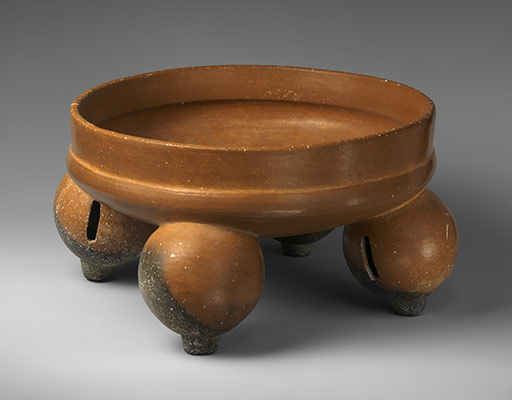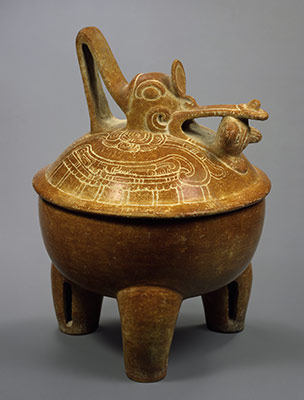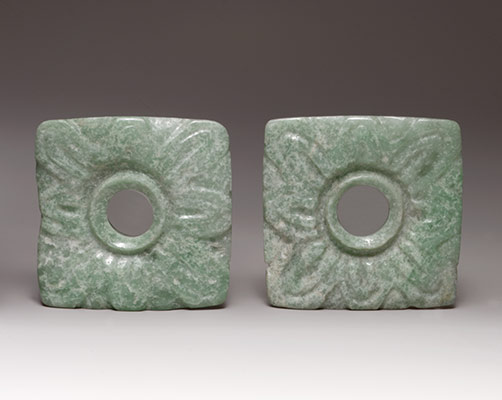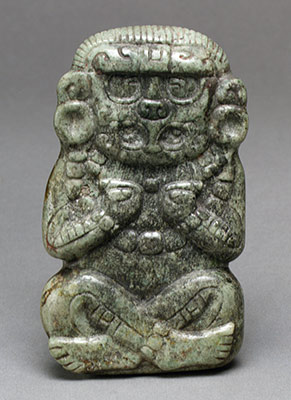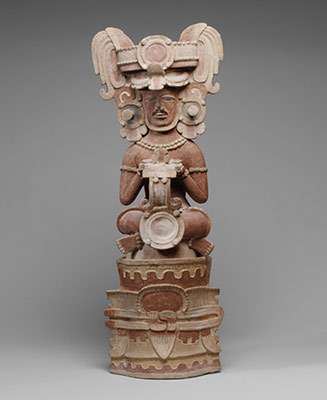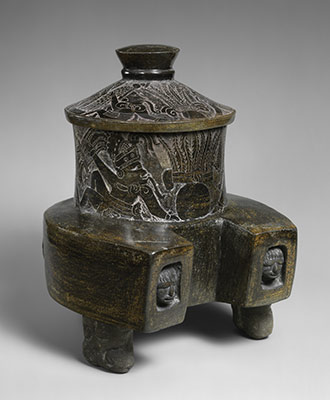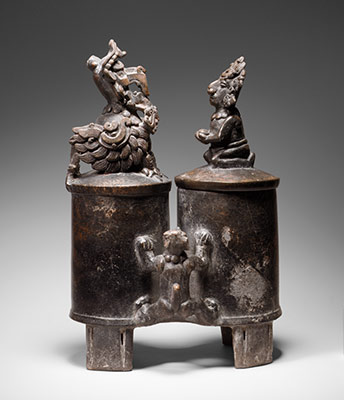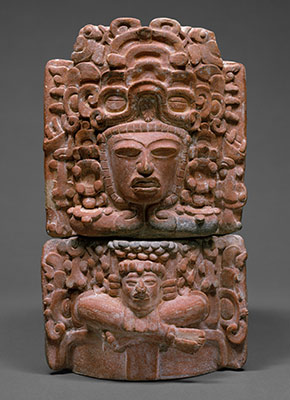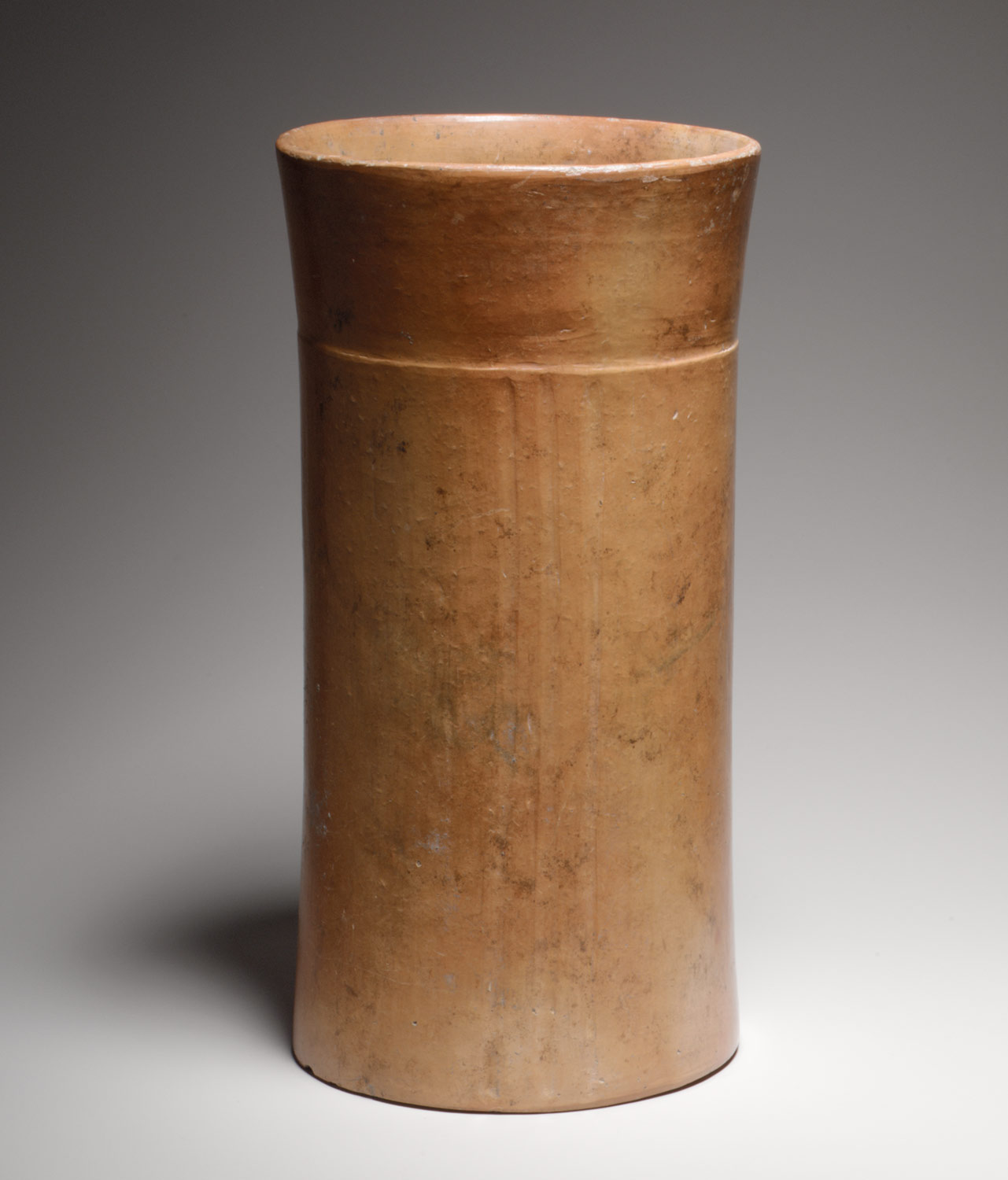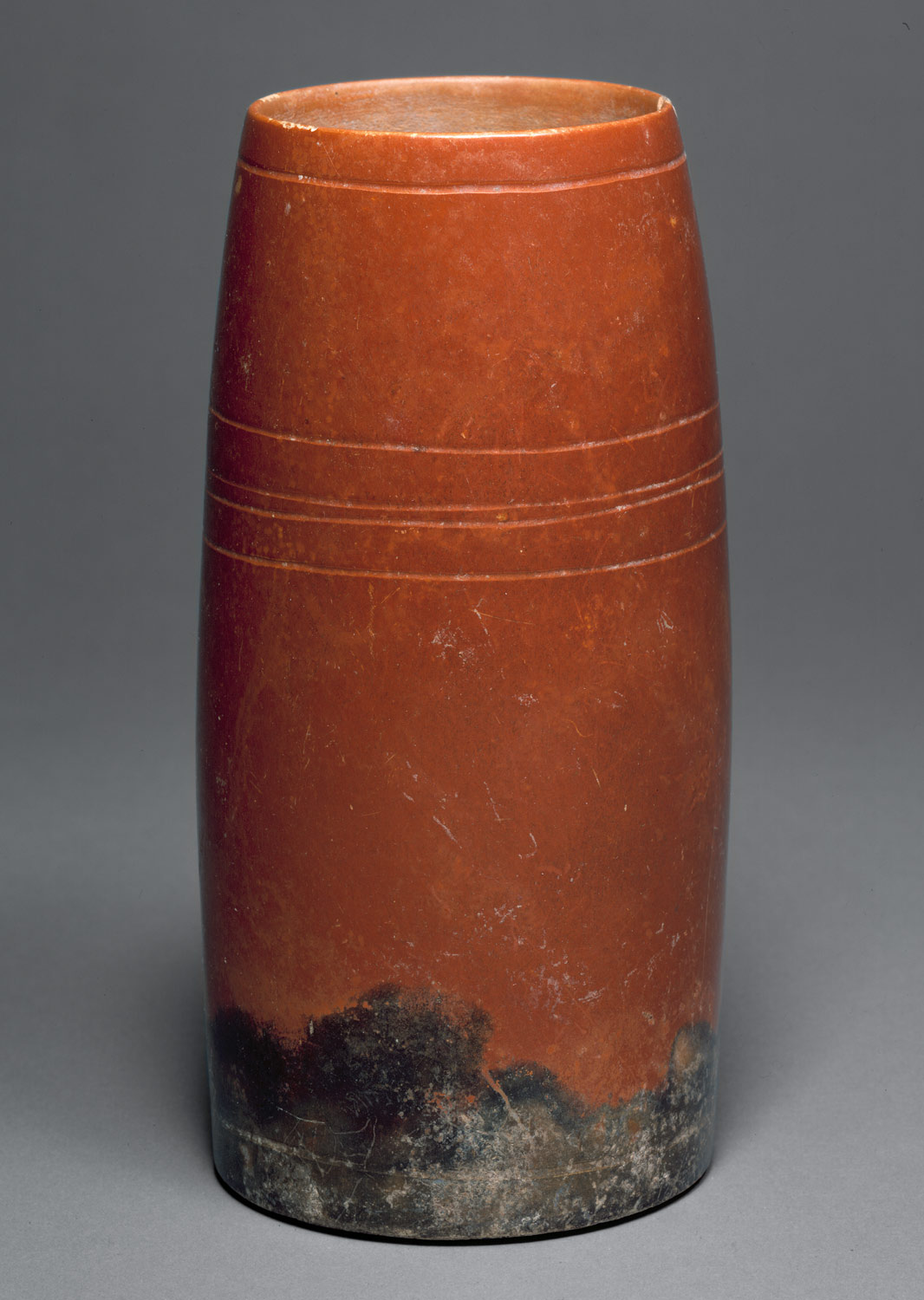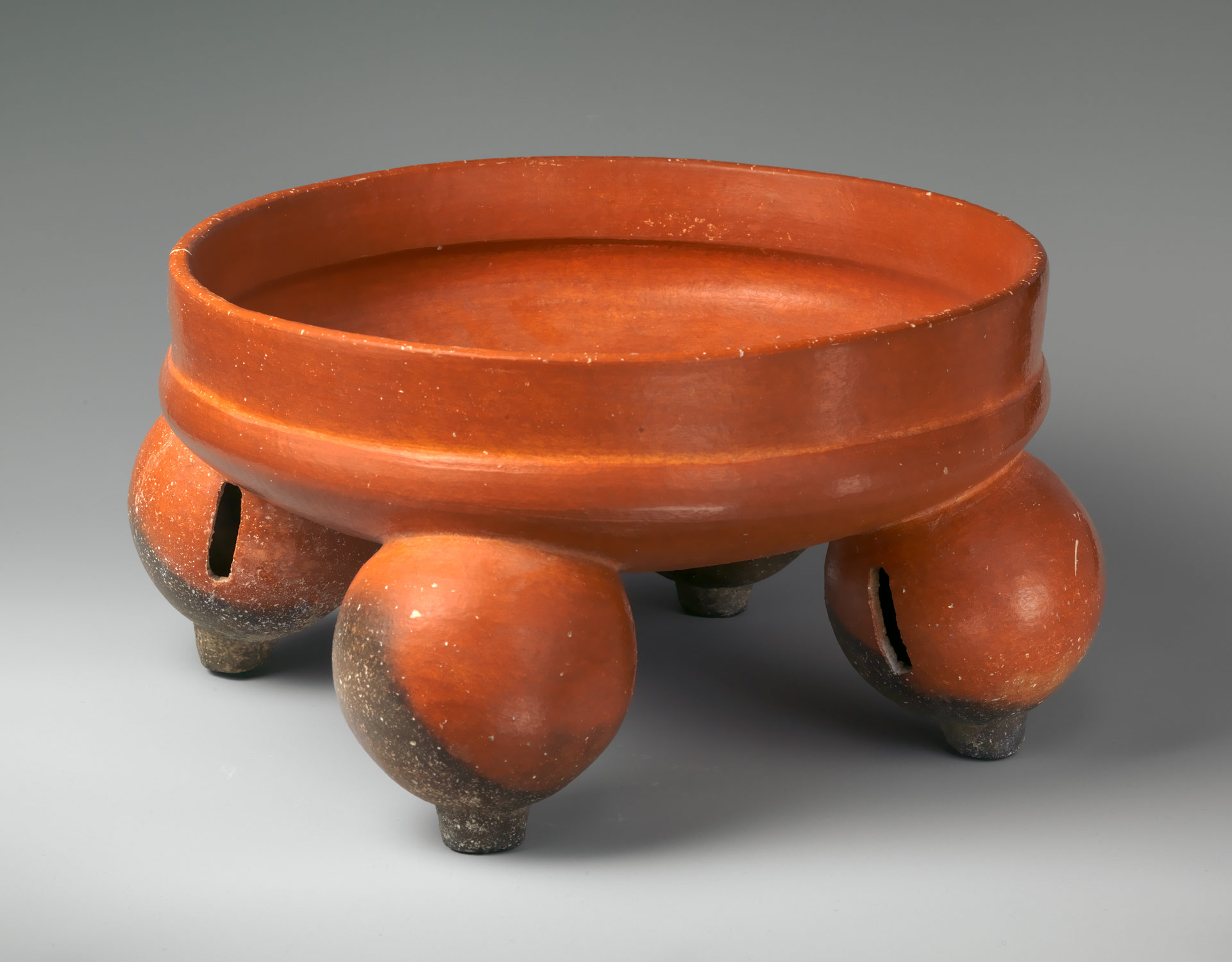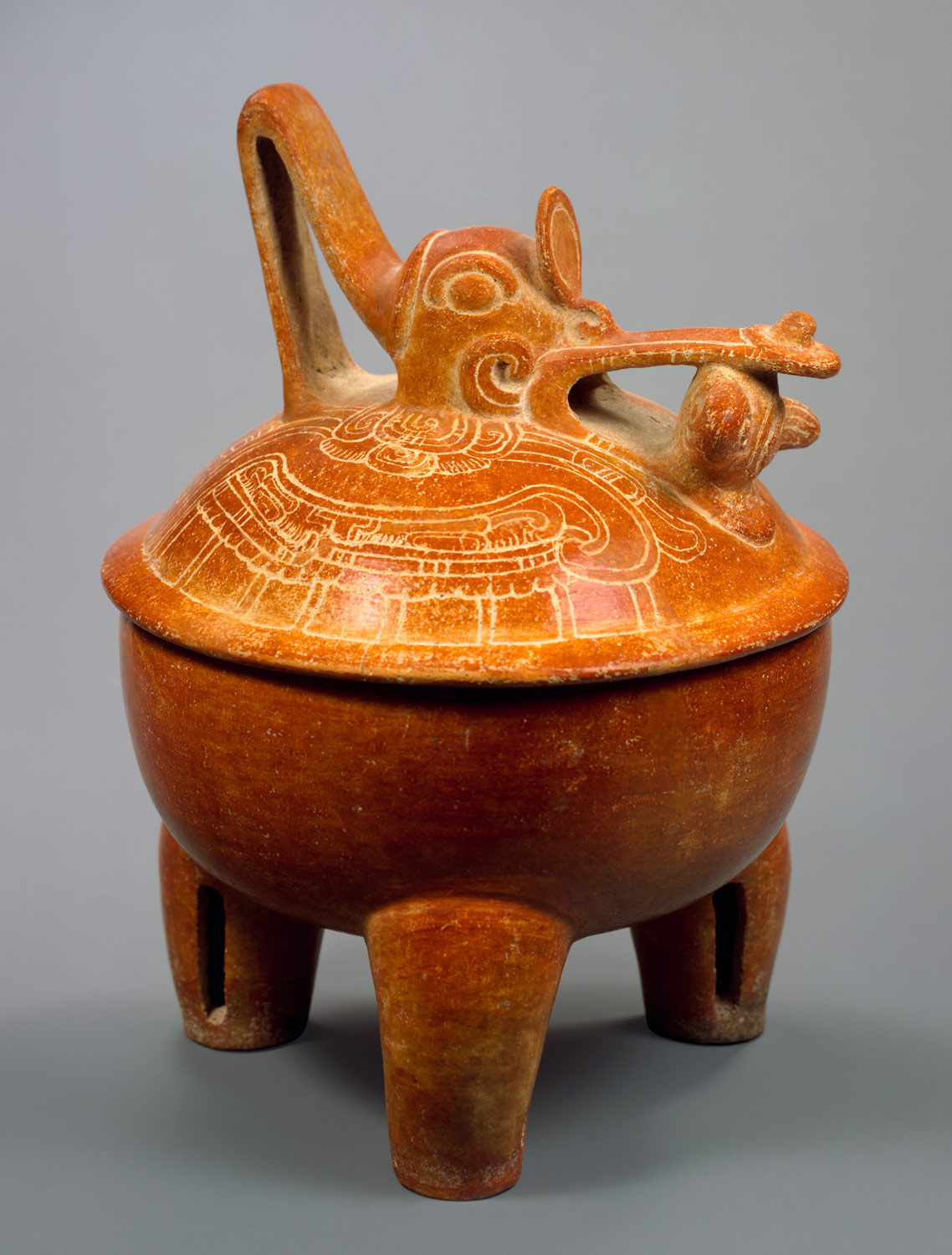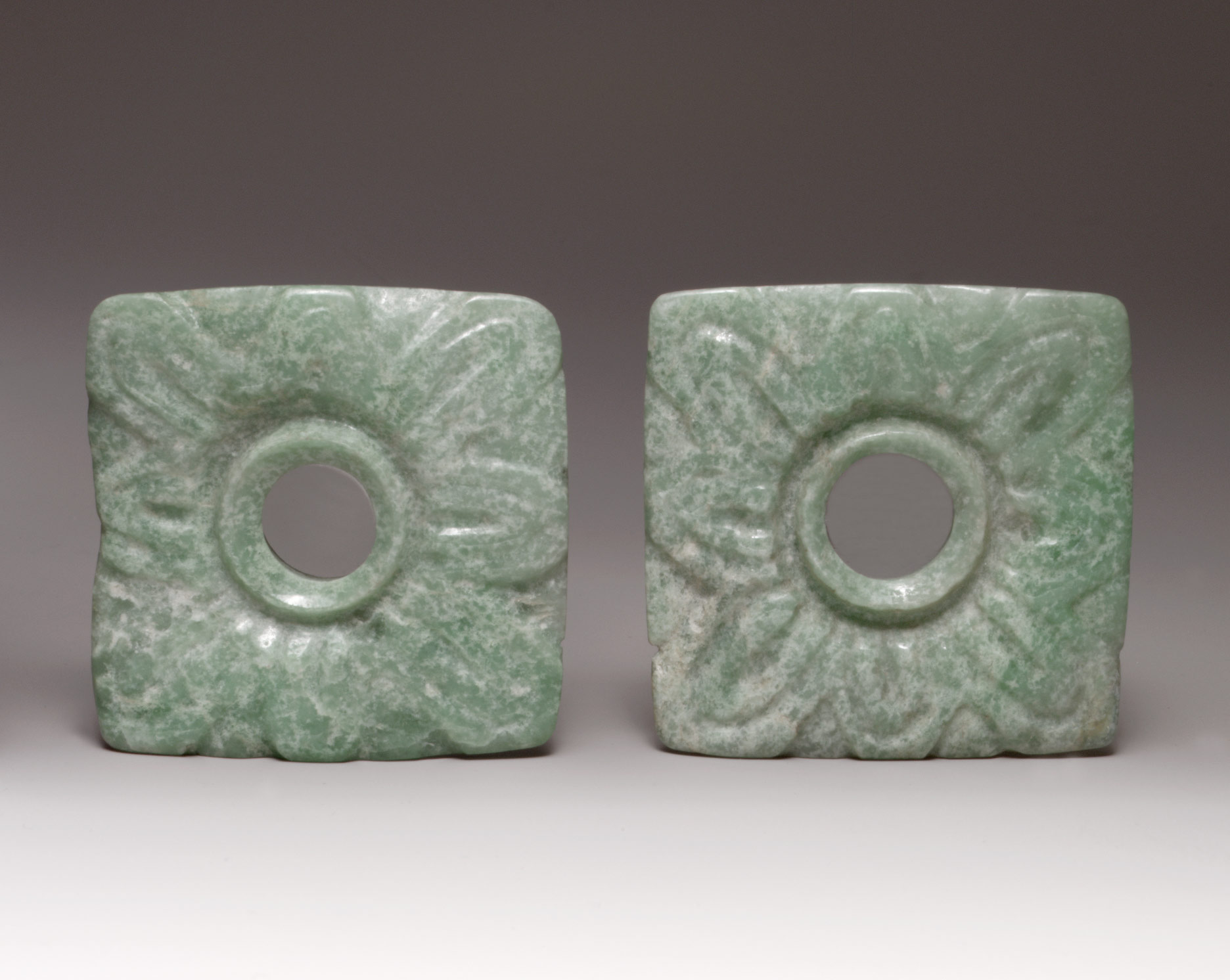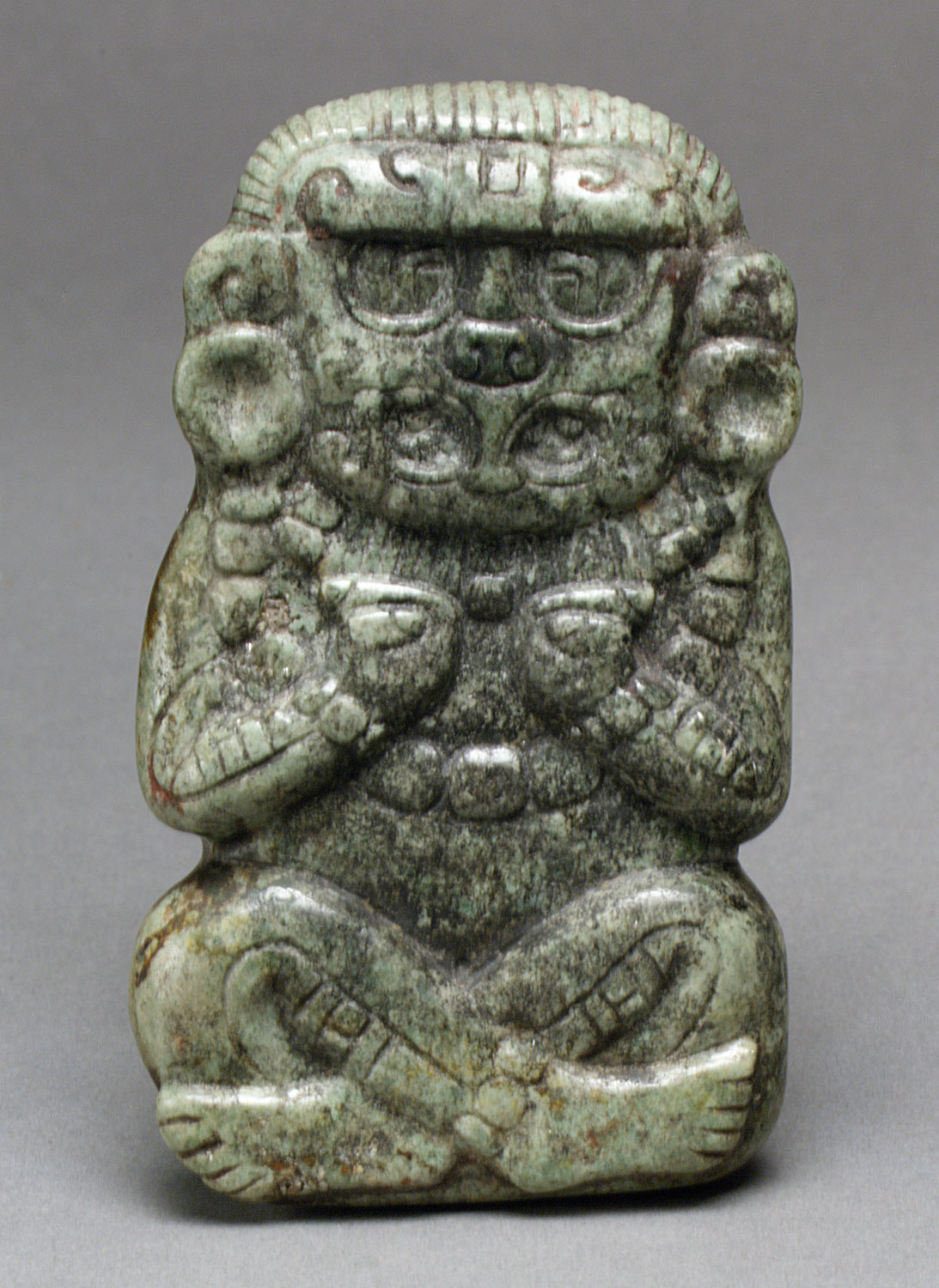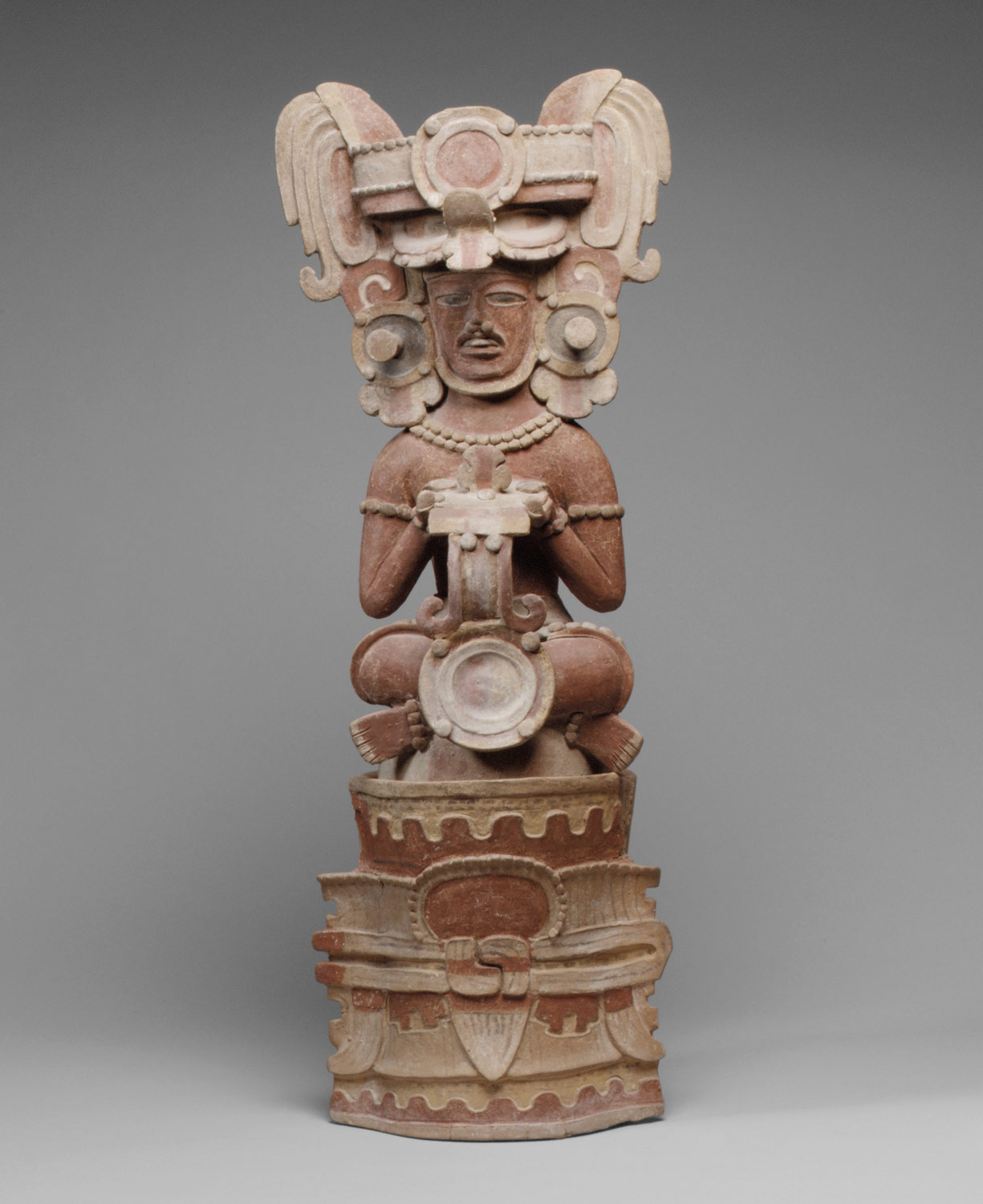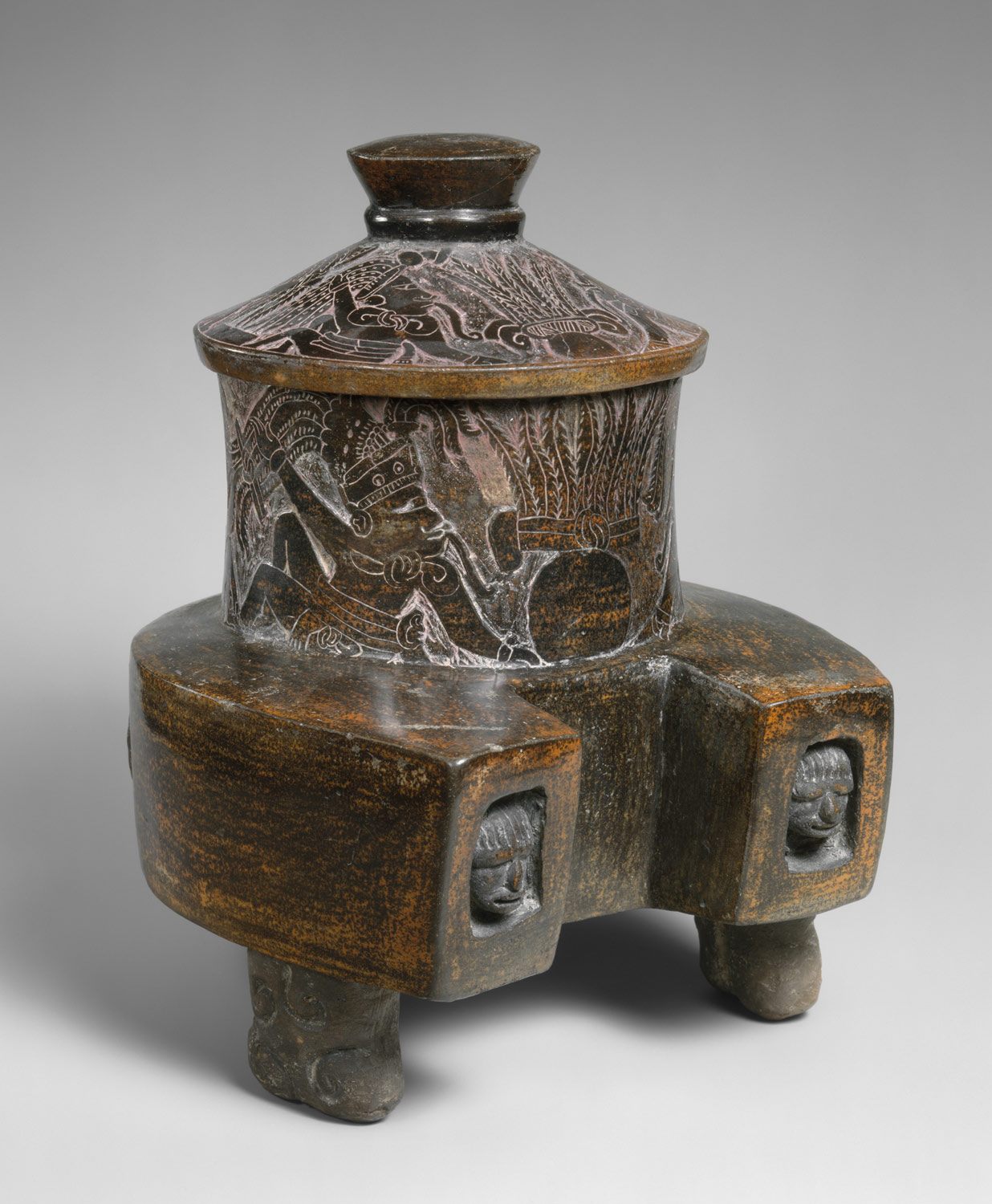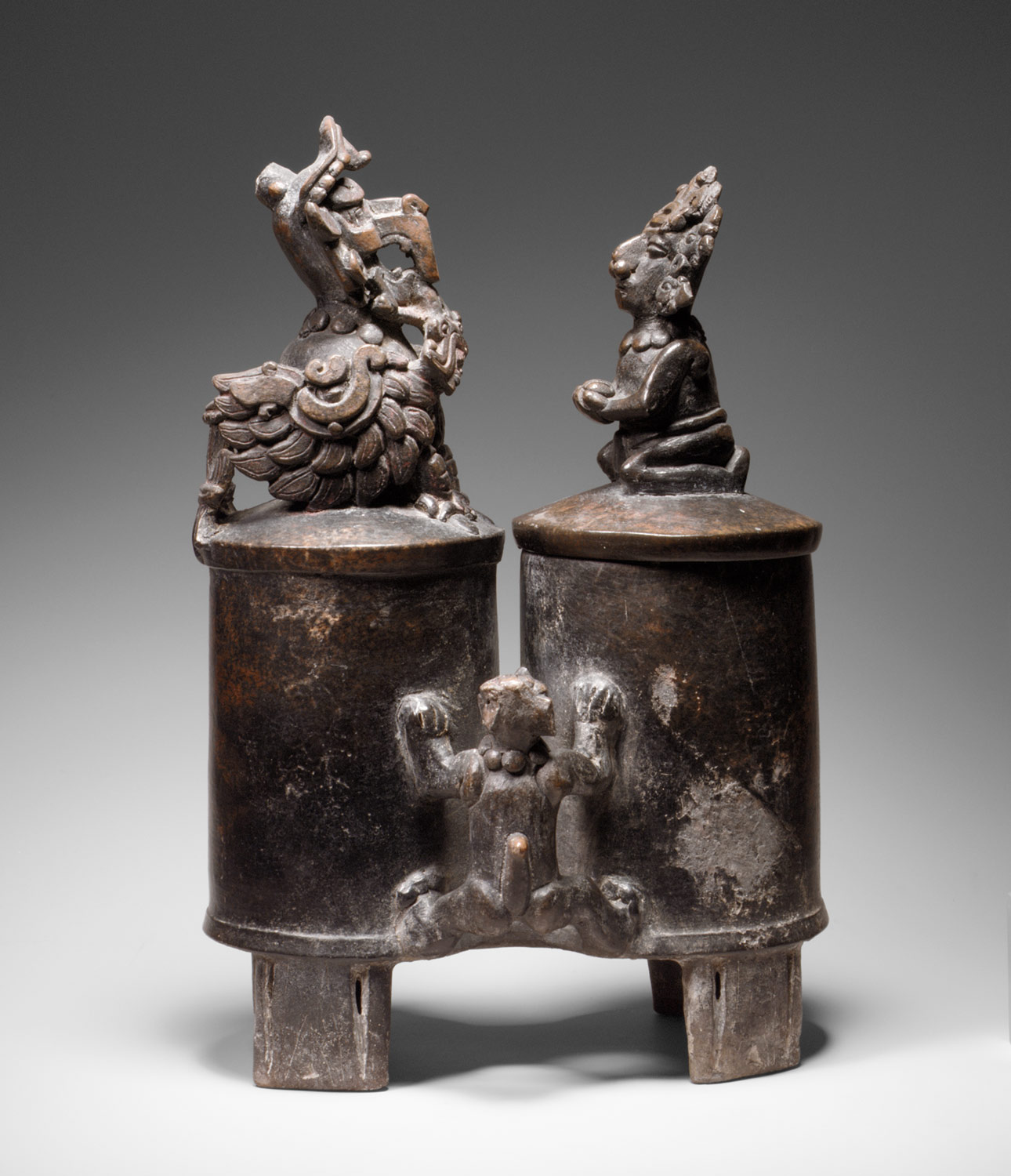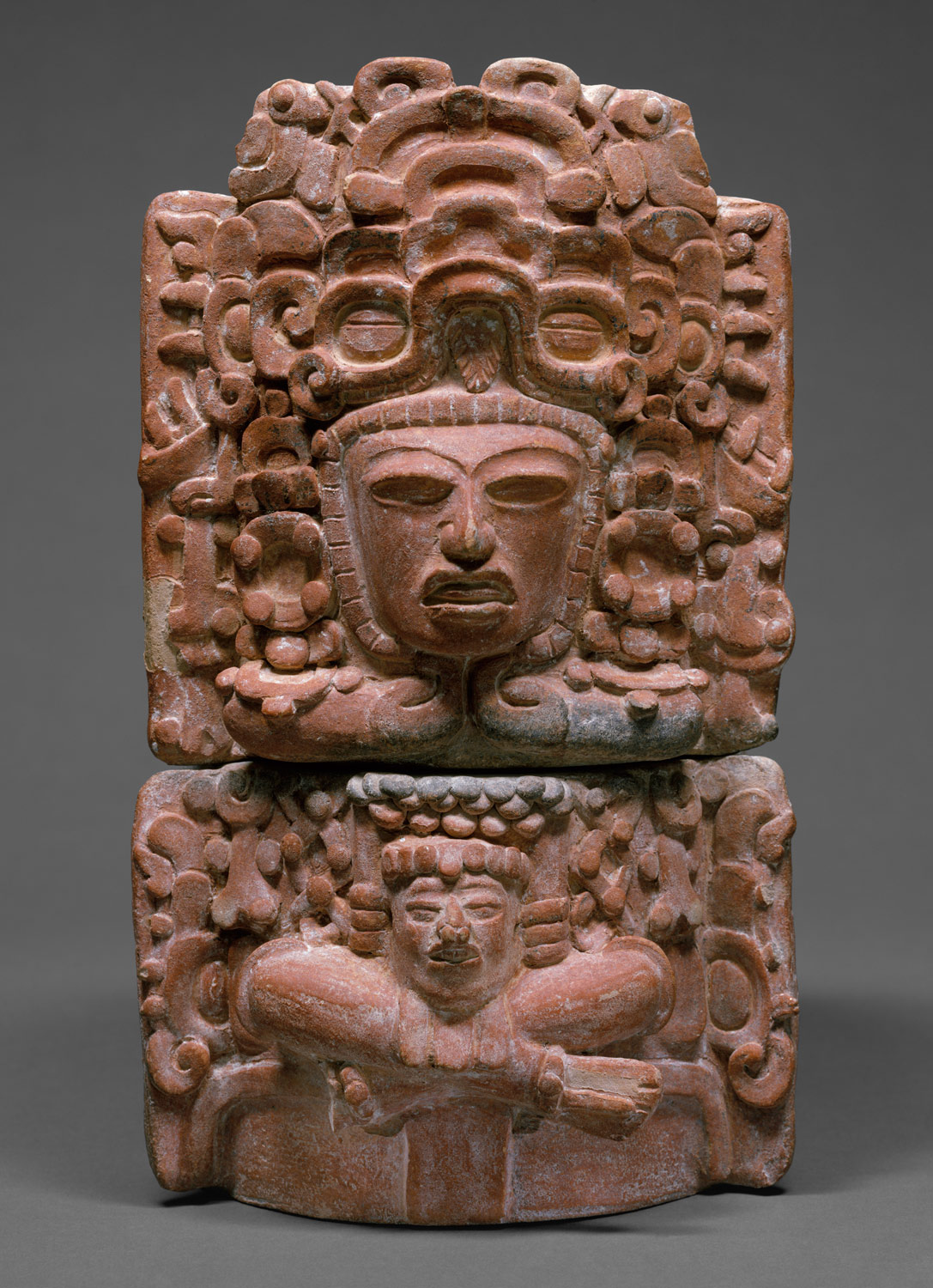Ceremonial centers along the Pacific coast of Guatemala, including Abaj Takalik, Izapa, and Kaminaljuyú, grow in size and stature. Pyramids and monumental stone sculpture at different sites provide evidence for connections with the ancestral Olmec style. In the tropical lowlands of the Petén, the villages of Nak’be and El Mirador emerge as major centers. Hieroglyphic writing appears by the dawn of the first millennium, and the Maya establish the architectural, sculptural, and iconographic systems that dominate their artistic production.
Maya Area, 1–500 A.D.
Timeline
1 A.D.
125 A.D.
NORTHERN REGION
CENTRAL REGION
SOUTHERN REGION
125 A.D.
250 A.D.
NORTHERN REGION
CENTRAL REGION
SOUTHERN REGION
250 A.D.
375 A.D.
NORTHERN REGION
CENTRAL REGION
SOUTHERN REGION
375 A.D.
500 A.D.
NORTHERN REGION
CENTRAL REGION
SOUTHERN REGION
Overview
Key Events
-
ca. 1 A.D.
In the Petén lowlands, a member of Tikal’s royal family is buried in a well-provisioned vaulted tomb dug into the sacred north-south axis of the North Acropolis, the location of numerous subsequent kingly burials. A greenstone mask with inlaid eyes and teeth, possibly forming a head for the burial wrappings, is among the tomb’s contents.
-
ca. 37 A.D.
Stela 1, bearing an eroded Long Count date of 7.19.15.7.12 (March 4, 37 A.D.), depicts a profile figure with an elaborate headdress at the highland site of El Baúl.
-
ca. 100 A.D.
Ceramic vessels, many used as mortuary offerings, are very well made and enjoy a long period of formal experimentation and surface elaboration.
-
ca. 200 A.D.
The legendary founder of Tikal’s most powerful dynasty, Yax Ch’aktel Xok (First Scaffold Shark), dies. Thirty-one rulers succeed him.
-
ca. 250 A.D.
The Long Count Calendar and hieroglyphic writing are in use in the lowlands, where the exploits of the ruling classes begin to be recorded permanently on stone.
-
ca. 260 A.D.
The eruption of the Ilopango volcano in the southwestern highlands disrupts the major centers, displaces populations, and upsets trade networks. The region begins a slow decline; Kaminaljuyú gradually loses status and authority. Large stone sculpture is no longer made.
-
ca. 292 A.D.
Stela 29 at Tikal bears a date of 8.12.14.8.15 (July 8, 292 A.D.)—the first Long Count date in the lowlands—and an ornately accoutered profile figure that may represent the sixth or seventh dynastic ruler Foliated Jaguar.
-
ca. 350 A.D.
Peoples in the Copán valley in the southeast Maya area (now in Honduras) build plastered masonry structures in a regional Maya style and trade with the southern highlands.
-
ca. 378 A.D.
The ninth recorded ruler of Tikal, Chak Toh Ich’ak I (Great Jaguar Claw, r. 360–78), dies on the day a foreign warrior named K’ak Sih (Fire-Born)—thought to be from Teotihuacan—arrives. The subsequent Tikal ruler, Yax Ain I (First Crocodile), has strong ties to Teotihuacan and there is much Teotihuacan presence at Tikal.
-
ca. 400 A.D.
At Kaminaljuyú, Teotihuacan presence is noted in the talud-tablero architectural profile and in cylindrical tripod vessels. The tripods are among the sumptuary goods in major tombs that also include materials such as jade earflares, pendants, and strings of beads. Cylindrical tripod vessels and other Teotihuacan ceramic forms are produced in the Tiquisate region of coastal Guatemala.
-
ca. 431 A.D.
The first dynastic ruler of Palenque in the hills of southern Mexico, K’uk’ Balam I (Quetzal Jaguar, r. 431–35), accedes to power on 8.19.15.3.4 (March 11, 431 A.D.). The dynasty retains control until sometime after 799 A.D.
-
ca. 435 A.D.
An important period of 400 years of approximately 360 Long Count days, known asbaktun, ends at 9.0.0.0.0 (December 11, 435 A.D.). At Copán, the dynasty of Yax K’uk Mo’ (Great-Sun First Quetzal Macaw, r. 426–ca. 437) begins, an event marked by the erection of major buildings in the city’s Principal Group. Fifteen recorded rulers succeed Yax K’uk Mo’.
-
ca. 445 A.D.
Tikal ruler Siyaj Chan K’awiil II (Stormy Sky, r. 411–56) erects a monument, Stela 31, which shows him in abundant ritual paraphernalia. A finely carved hieroglyphic text with the early history of Tikal’s royal lineage is on the back.
-
ca. 475 A.D.
Powerful and belligerent, the cities of Tikal, Caracol, and Calakmul dominate the Petén. Naranjo, a smaller neighbor, begins to produce fine ceramic vessels.
-
ca. 484 A.D.
An extensive network of raised causeways emanates from Caracol. The causeways will be used for many hundreds of years.
Citation
“Maya Area, 1–500 A.D.” In Heilbrunn Timeline of Art History. New York: The Metropolitan Museum of Art, 2000–. http://www.metmuseum.org/toah/ht/?period=05®ion=caa (October 2000)
Related
Map
